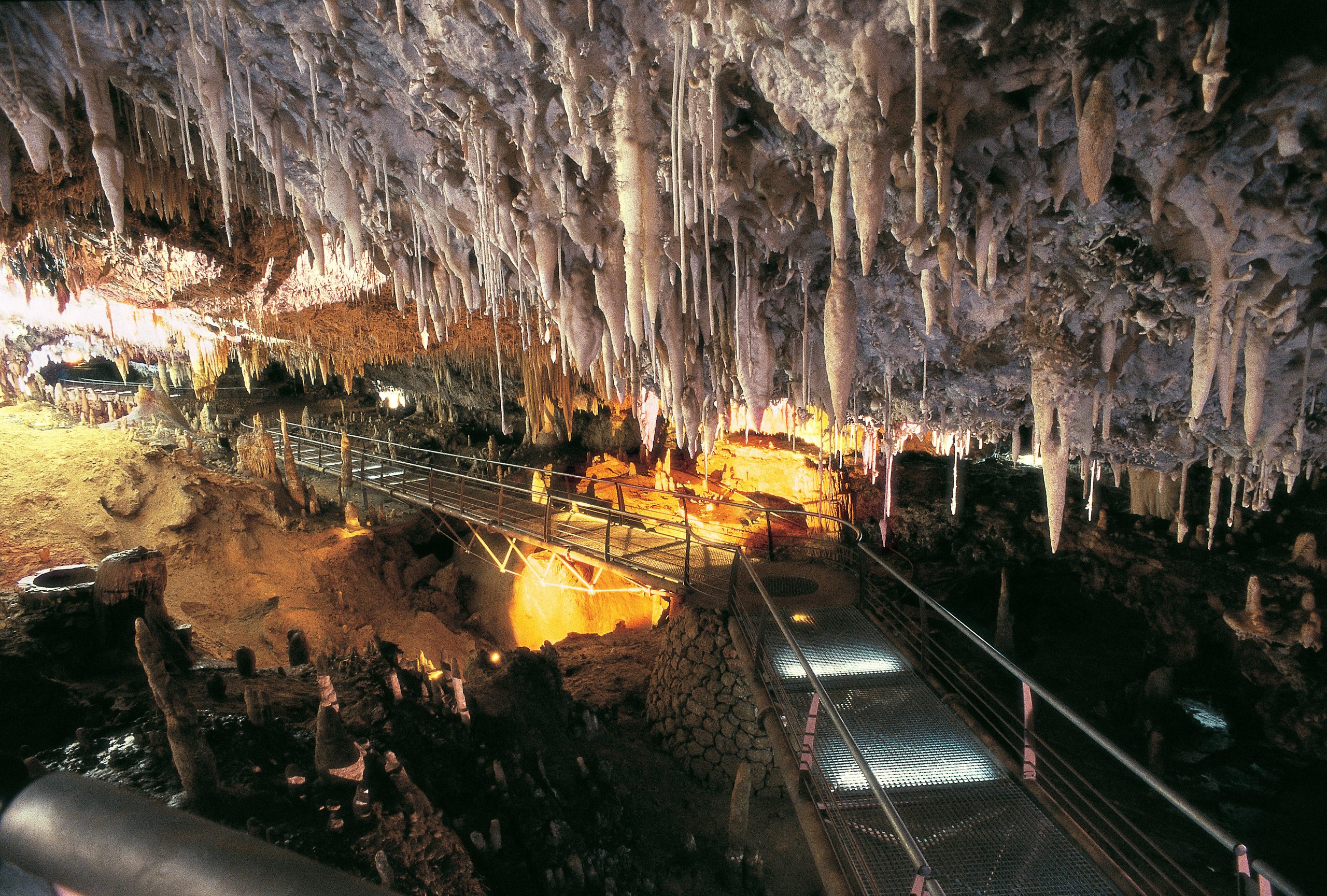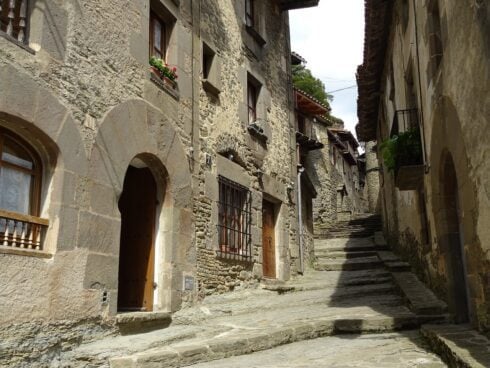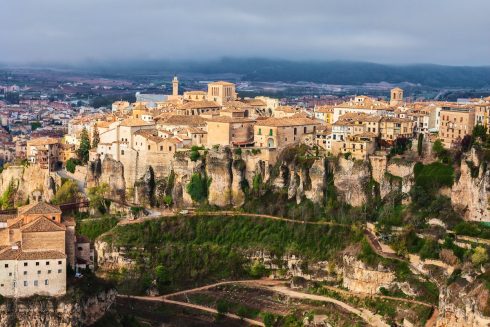WHEN Spain’s peak summer temperatures start nudging 40 in parts of the country, visiting a cool, dark, damp cave sounds pretty good. The fact these hidden tourist sites are also atmospheric and spectacular is a bonus.
Sometimes the attractions are man made: The cave paintings in the Cave of Altamira, near Santillana del Mar in Cantabria, were described as masterpieces of creative genius by UNESCO. Altamira is part of a world heritage site that includes another 17 caves in Northern Spain where Paleolithic art has been found, the oldest dating back to 35,000 BC, which is fairly mind-blowing.
Others have star attractions that are totally natural and millions of years old, like weird stalactites and stalagmites, while a few have all mod cons, fancy lighting and live music.
There’s a cave to suit everyone, but check out these:
Hornos de la Peña, Cantabria
GO off the beaten track and back in time to the home of some of the last Neanderthals and first homo sapiens. They picked a lovely spot: the cave is in the green Cantabrian mountains, on a hill between two river valleys.
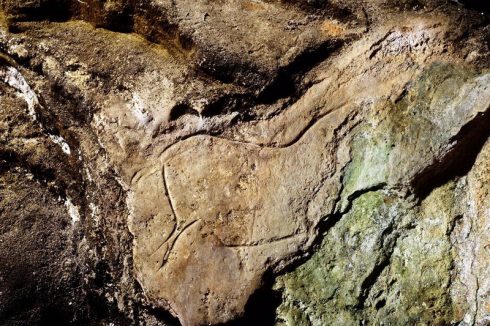
One of the UNESCO group of 18 with Altamira, the cave art (engravings not paintings) is the big draw. Images of horses, bison, goats, a stag and snake are accurately observed, which makes the image of a man with one arm raised and a long tail just a little chilling. The oldest date from 18,000 BC, and the more ‘contemporary’, from 13,000 BC.
One to explore with torches, wearing a hard hat, and in maximum groups of four, this is not for clautrophobics who don’t like bats (there’s a resident colony). But as one recent visitor said: ‘a visit to this cave was one of the best days of my life’.
Nerja Caves, Malaga
CAVING doesn’t get much easier: Nerja has a Cueva Tren (cave train) that makes the short journey from the museum to the site, near Maro. Once there, visitors get to see jagged, needly stalactites, and a worthy contender for the world’s largest stalagmite (a massive thing standing 32 metres tall) on a 45-minute tour. It’s all surprisingly colourful thanks to the copper, iron and lead content of the rocks.
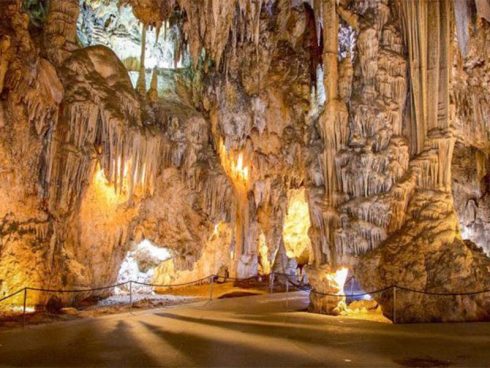
Ancient artists were busy here too: so far 589 paintings have been discovered, but they’re out of bounds.
Atmospheric night tours are available.
Gruta de las Maravillas, Huelva
OPENING to the public in 1914, the Grotto of Marvels is Spain’s oldest subterranean tourist attraction. The grotto was carved out of limestone by the water which lies in crystal clear pools and drips through the walls.
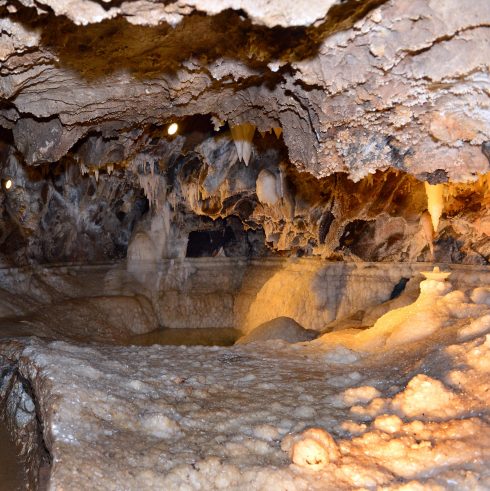
Two of the three levels are currently accessible, and each has multiple chambers, well lit to allow you to admire the extraordinary rock formations and sparkling crystals.
Located under the hill, under the castle in Aracena, legend has it the grotto was discovered by a farmer who was looking for his cow.
Valporquero, Leon
THE cave is estimated to be a million years old – which makes it a baby. Also carved by water trickling through limestone, it is famous for the huge, strange, geological formations inside it. Many have been given excellent names, such as ‘The Phantom’, the ‘Virgin and Child’, and, inevitably, the ‘Leaning Tower of Pisa’, as have the rooms, the best of which is the ‘Stalactite Cemetery’.
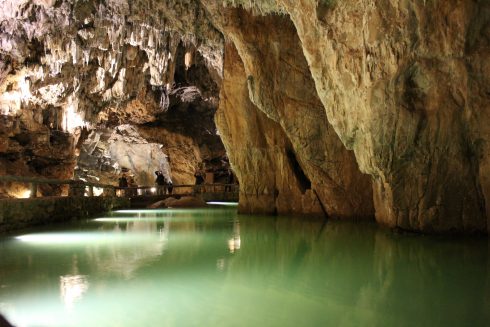
Open since 1996, Valporquero’s darker, tighter corners are also popular with intrepid potholers. Like most caves, it’s located in beautful area that’s worth visiting anyway – close to Vagacervera Gorge in the mountains of Leon.
Caves of Drach, Mallorca
This is one of the few places you can take a boat ride (albeit a short one) in peak summer in Spain without the risk of sunburn. The Caves of Drach should be the name for a Bond villain’s lair, but it’s actually one of Mallorca’s top tourist attractions. Over 1km in length and 25m deep in places, the cave system boasts a large underground lake, Lake Martel, and, even more unusually, four classical musicians.
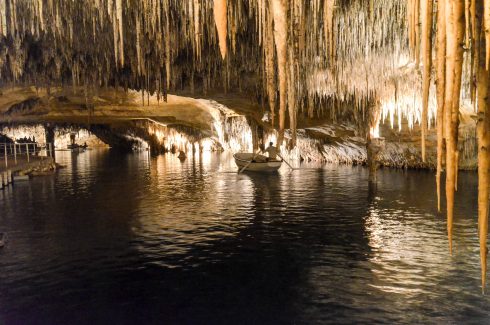
Yes: as if being in a cave wasn’t excitement enough, all visitors are ushered to a lakeside auditorium for a short concert that kicks off with Offenbach and ends with a light show over the water, before being transported towards the exit in little boats.
Cueva del Soplao, Cantabria
YOU don’t have to be a speleologist (someone who studies, stalactites, stagmalites, gorges, columns, helictites and so on) to be awestruck by this cave, but if you are an enthusiast, you’ll be in paradise.
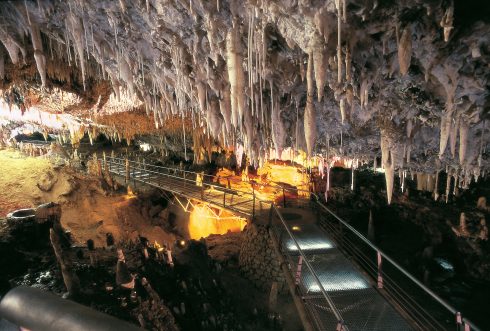
The cave has the world’s largest concentration of ‘eccentric helictites’ – that’s stalactites that grow in multiple directions (for reasons no-one understands). And the system is big, stretching 20 km.
Discovered by miners who chipped through a dividing wall in 1908, the derricks, furnaces and tunnels of the industrial heritage form part of the visitor attraction at this very special, very isolated spot.
READ MORE:
- Ten of the best open air museums to visit in Spain
- 12 great books about Spain to read on the beach this summer
- One of Europe’s biggest megalithic sites discovered in southern Spain while planting avocados
Click here to read more Olive Press Travel News from The Olive Press.

